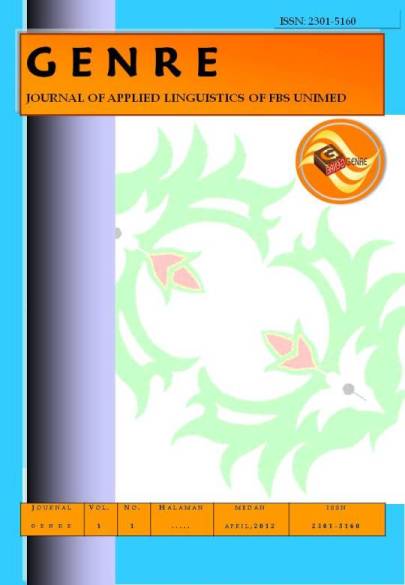DEVELOPING STUDENTS’ WORKSHEET USING SCIENTIFIC APPROACH IN TEACHING READING GRADE EIGHT STUDENTS OF SMP CERDAS MURNI TEMBUNG
DOI:
https://doi.org/10.24114/gj.v13i4.65491Abstract
This study concerns on how reading worksheet are developed for junior high school. This study was conducted by using Research and Development (R&D) design. It was started from collecting the data, analyzing data, designing course grid based on curriculum 2013, designing new reading worksheet, validating by experts, and revising for final product. The new students’ reading worksheet was designed based on scientific approach stages, which is contained of five stages; observing, questioning, experimenting, associating, and communicating. The source of data of this study was the grade VIII students of SMP Cerdas Murni Tembung consisting 26 students. Instrument of collecting data were questionnaire, and interview. After analyzing data, the researcher got the students’ need in learning English. The interview and questionnaire result proved that the students need students’ reading worksheet which contains for grade VIII. The materials which were developed were focused on descriptive text, recount text, and narrative text. The product had been validated by the experts. The average scores are 3,8 from English subject teacher and 3,4 from English lecturer. It means the developing students’ reading worksheet categorized as relevant for students of grade VIII.Downloads
Published
2024-10-03
Issue
Section
Articles
License
Copyright (c) 2025 Dwi Wulandari, Masitowarni Siregar

This work is licensed under a Creative Commons Attribution-NonCommercial-NoDerivatives 4.0 International License.
Authors who publish with this journal agree with the following terms:
- Authors retain copyright and grant the journal right of first publication with the work simultaneously licensed under a Creative Commons Attribution License that allows others to share the work with an acknowledgment of the work's authorship and initial publication in this journal.
- Authors are able to enter into separate, additional contractual arrangements for the non-exclusive distribution of the journal's published version of the work (e.g., post it to an institutional repository or publish it in a book), with an acknowledgment of its initial publication in this journal.
- Authors are permitted and encouraged to post their work online (e.g., in institutional repositories or on their website) prior to and during the submission process, as it can lead to productive exchanges, as well as earlier and greater citation of published work (See The Effect of Open Access).
- This work is licensed under a Creative Commons Attribution-ShareAlike 4.0 International License.







.png)


